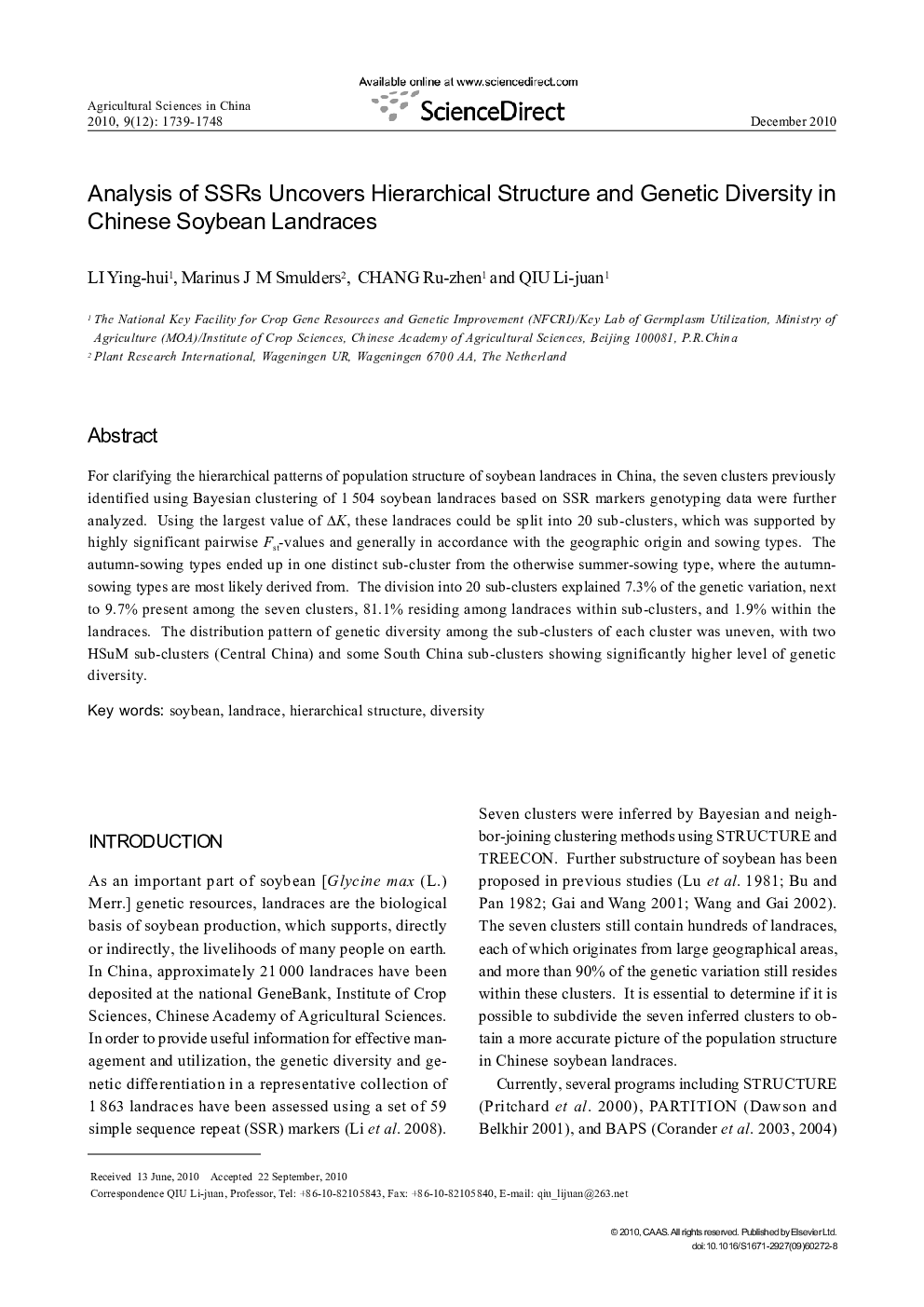| Article ID | Journal | Published Year | Pages | File Type |
|---|---|---|---|---|
| 4489982 | Agricultural Sciences in China | 2010 | 10 Pages |
For clarifying the hierarchical patterns of population structure of soybean landraces in China, the seven clusters previously identified using Bayesian clustering of 1 504 soybean landraces based on SSR markers genotyping data were further analyzed. Using the largest value of ΔK, these landraces could be split into 20 sub-clusters, which was supported by highly significant pairwise Fst-values and generally in accordance with the geographic origin and sowing types. The autumn-sowing types ended up in one distinct sub-cluster from the otherwise summer-sowing type, where the autumn-sowing types are most likely derived from. The division into 20 sub-clusters explained 7.3% of the genetic variation, next to 9.7% present among the seven clusters, 81.1% residing among landraces within sub-clusters, and 1.9% within the landraces. The distribution pattern of genetic diversity among the sub-clusters of each cluster was uneven, with two HSuM sub-clusters (Central China) and some South China sub-clusters showing significantly higher level of genetic diversity.
